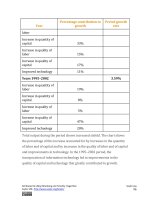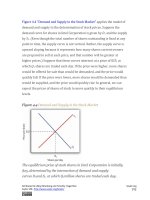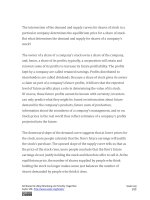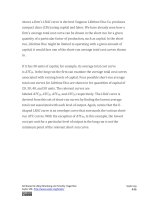Authors libby rittenberg 771
Bạn đang xem bản rút gọn của tài liệu. Xem và tải ngay bản đầy đủ của tài liệu tại đây (383.75 KB, 1 trang )
Consider the case of bilateral monopoly illustrated in Figure 14.12
"Bilateral Monopoly". Over what range of wages will employment be
higher than it would have been if there was a monopsony buyer of
labor but no monopoly in the supply of labor?
Case in Point: Unions and the Airline
Industry
Unions represent 60% of the nonmanagerial employees of U.S. airlines.
And labor costs make up one-third of airline costs. All employees have a
stake in the success of the firms for which they work. That is certainly the
case for the major unions representing airline employees. Both union
leaders and airline management have much to gain from a relationship
that benefits both employees and the airlines that employ them.
That sort of relationship has not always existed. In 1981, for example,
Continental Airlines hired Frank Lorenzo, an airline entrepreneur, to run
Continental. The airline had lost money the previous three years. Mr.
Lorenzo promptly abrogated Continental’s contracts with employees, and
told them that they could go back to work but only at sharply reduced
wages. Continental’s pilots, flight attendants, and ground crews declared
strikes against the airline. The airline was able to break the strike by hiring
replacement employees. Even so, Continental declared bankruptcy in
1983. Mr. Lorenzo told striking employees that they could return to work,
but they could do so only by agreeing to work at half their previous wage.
Continental’s strategy of union suppression achieved reductions in wage
costs, but those savings had a cost as well. A demoralized labor force
produced dramatic reductions in the quality of service, and Continental
was back in bankruptcy in 1991. In 1986, 6,000 members of the
Attributed to Libby Rittenberg and Timothy Tregarthen
Saylor URL: />
Saylor.org
771









